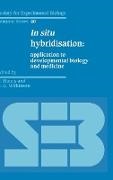Read more
This book brings together contributions from leaders in the application of in situ hybridisation.
List of contents
1. Non radio isotopic labels for in situ hybridisation histochemistry: a histochemist's view G. Coulton; 2. Use of haptenised nucleic acid probes in fluorescent in situ hybridisation A. K. Raap; 3. The use of complementary RNA probes for the identification and localisation of peptide messenger RNA in the diffuse neuroendocrine system A. Giaid; 4. Contributions of the spatial analysis of gene expression to the study of sea urchin development R. C. Aangerer; 5. Advantages and limitations of in situ hybridisation as exemplified by the molecular genetic analysis of Drosophila development P. W. Ingham; 6. The use of in situ hybridisation to study the localisation of maternal mRNAs during Xenopus oogenesis H. Perry-O'Keefe; 7. In situ hybridisation in the analysis of genes with potential roles in mouse embryogenesis D. G. Wilkinson; 8. Evolution of algal plasmids from eukaryotic endosymbionts G. I. McFadden; 9. Localisation of expression of male flower specific genes from maize by in situ hybridisation S. Y. Wright and A. J. Greenland; 10. Tissue preparation techniques for in situ hybridisation studies of storage-protein gene expression during pea seed development N. Harris; 11. Investigation of gene expression during plant gametogenesis by in situ hybridisation K. G. Jones; 12. Sexing the human conceptus by in situ hybridisation J. D. West; 13. Nonisotopic in situ hybridisation in human pathology C. S. Herrington; 14. The demonstration of viral DNA in human tissues by in situ hybridisation M. Wells.
Summary
This book brings together contributions from leaders in the application of in situ hybridisation and guides the would-be exponent through the various options and variations of the technique. The information gained from this technique prompted advances in our understanding of developmental biology.

